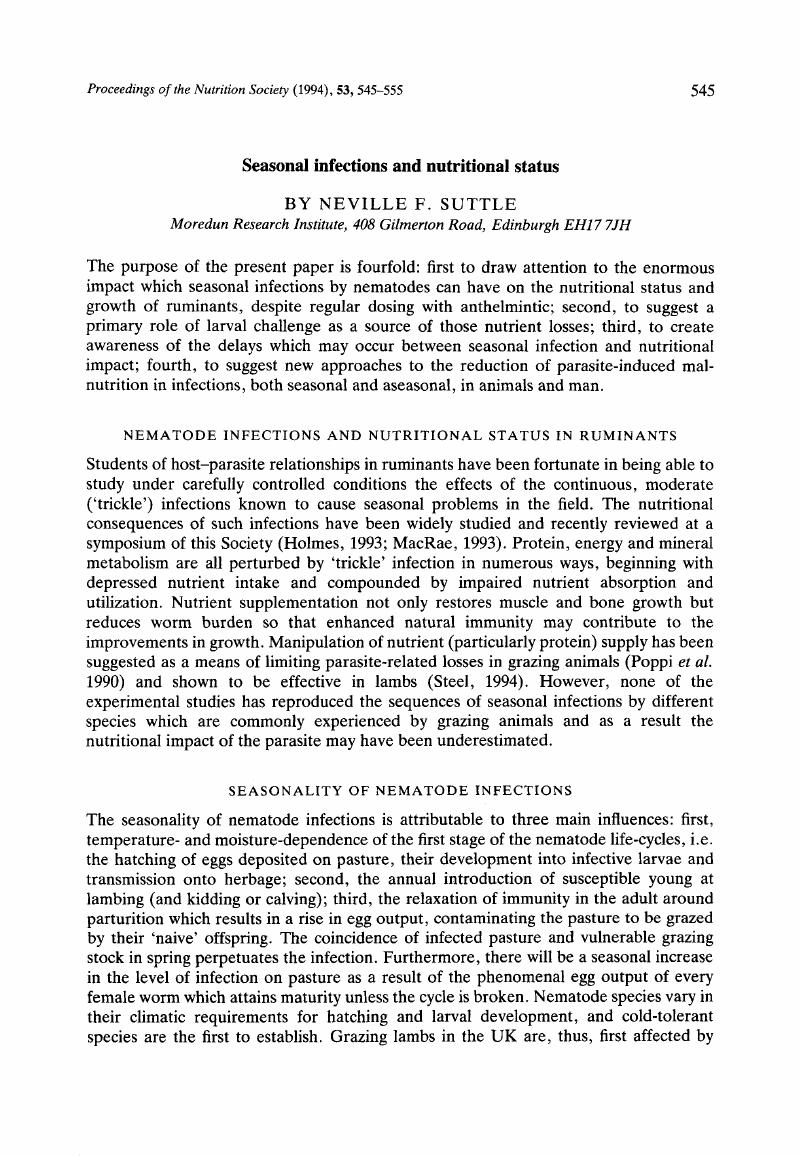Crossref Citations
This article has been cited by the following publications. This list is generated based on data provided by Crossref.
Suttle, N F
and
McLean, K
1995.
Anthelmintic unresponsive diarrhoea in ewes and hoggs.
Proceedings of the British Society of Animal Science,
Vol. 1995,
Issue. ,
p.
63.
Suttle, N F
and
McLean, K
1995.
Anthelmintic unresponsive diarrhoea in ewes and hoggs.
Proceedings of the British Society of Animal Science,
Vol. 1995,
Issue. ,
p.
63.
Suttle, N. F.
Brebner, J.
McLean, K.
and
Hoeggel, F. U.
1996.
Failure of mineral supplementation to avert apparent sodium deficiency in lambs with abomasal parasitism.
Animal Science,
Vol. 63,
Issue. 1,
p.
103.
Tamminga, S.
and
Schrama, J. W.
1998.
Environmental effects on nutrient and energy metabolism in ruminants.
Archiv für Tierernaehrung,
Vol. 51,
Issue. 2-3,
p.
225.
Fenton, A
Wall, R
and
French, N
1998.
The incidence of sheep strike by Lucilia sericata on sheep farms in Britain: a simulation model.
Veterinary Parasitology,
Vol. 76,
Issue. 3,
p.
211.
Idris, Ahmad
Moors, Eva
Sohnrey, Birgit
and
Gauly, Matthias
2012.
Gastrointestinal nematode infections in German sheep.
Parasitology Research,
Vol. 110,
Issue. 4,
p.
1453.



